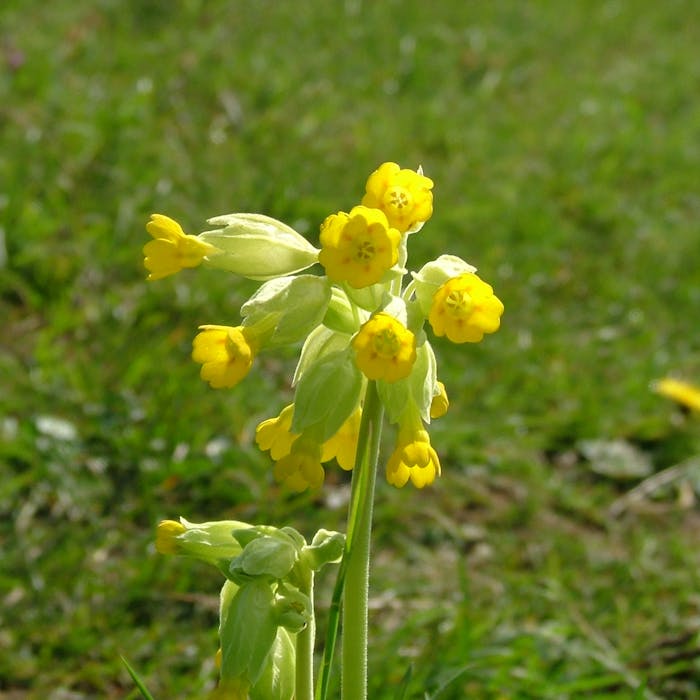
The cowslip - a spring delight in sunny meadows
The cowslip is a relative of the primrose, and a wildflower that can be seen in spring in meadows and verges, usually preferring dry chalky soil. The cup-shaped, yellow flowers grow in nodding clusters on tall stalks. The leaves are oval and wrinkled like the Primrose.
The fortunes of the cowslip have improved in recent years as it has become increasingly popular as a garden plant, and is also often included in wildflower seed mixes used by councils for motorway verges and parks.
Cowslips are important for wildlife, and their flowers an early source of nectar for various insects including bees, beetles and butterflies such as the brimstone. Cowslip is also a food plant for the Duke of Burgundy butterfly. The flowers can be eaten in salads.
Cowslips were once as common as the buttercup. Numbers declined between 1930 and 1980, mainly due to the loss of grassland habitat. From the 1950s, modern farming, including the ploughing of old grassland and the extension of the use of chemical herbicides, was particularly detrimental to this wildflower.
Fortunately, things are now improving and the plant has begun to return to unsprayed verges and village greens as well as colonising the embankments alongside newly constructed roads, helped by the scattering of wild flower seeds. Vast masses have reappeared in Hertfordshire where grazing pressures have eased.
The cowslip has many folk names due to its historical importance and fame, including 'Key of Heaven', 'Paigles', 'Bunch of Keys' and 'Herb Peter'. The name cowslip actually means 'cow-slop' (i.e. cowpat), in reference to its choice of meadow habitat.
The cowslip is the county flower for Essex, Northamptonshire, Surrey and Worcestershire.
Further reading
Links to external websites are not maintained by Bite Sized Britain. They are provided to give users access to additional information. Bite Sized Britain is not responsible for the content of these external websites.
